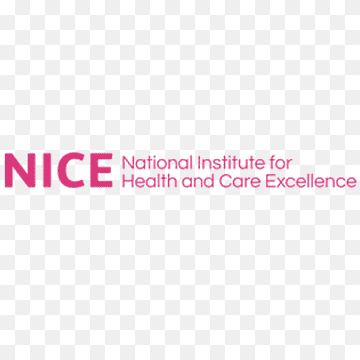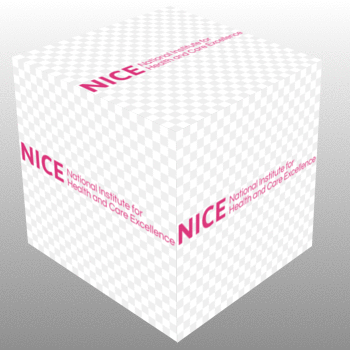NICE Draft Guidelines for ME 2020
Invest in ME Research Response to Myalgic encephalomyelitis/chronic fatigue syndrome: diagnosis and management CG869
Introduction
The NICE Draft Guidelines for ME document was published on 10th November 2020 [1].
They are destined to replace the NICE Guidelines for ME CG53 that were published in 2007 [2].
Invest in ME Research is a stakeholder in NICE Guidelines for ME and has reviewed the
draft guidelines after they were published.
The charity has returned comments to NICE using the required pro-forma [3].
![]() Our full response to these guidelines is available in pdf form using this link
Our full response to these guidelines is available in pdf form using this link
When a national organisation that is responsible for clinical excellence and care announces
 that a new set of guidelines for a disease is to be created, following thirteen years having
passed since the last version of such guidelines was published, then it might be considered
to present a great opportunity.
that a new set of guidelines for a disease is to be created, following thirteen years having
passed since the last version of such guidelines was published, then it might be considered
to present a great opportunity.
An opportunity to evaluate new research, to bring in new
treatments and practices, and to introduce new recommendations and guidance.
After all, new research into the disease would inevitably have taken place during those
thirteen years that would demand modification and more effective treatments may well have
become available.
It is a damning indictment of the state of affairs regarding myalgic
encephalomyelitis (ME or ME/CFS) in the UK that the new NICE draft guidelines document
for this disease that was published on 10th November 2020 can do no such thing.
Instead, the draft guidelines of 2020 are even sparser than those of 2007.
The 2020 document stands as a testament to thirteen years of nothing much changing,
evidence of the apathy, ignorance and mendacity from government and establishment
healthcare and research organisations in treating this disease, evidence of thirteen years of failure.
This is a summary of the major points from the guidelines –
- There is still inconsistencies around terminology and ME/CFS is now used in place of CFS/ME
- Graded Exercise Therapy (GET) is likely to be removed as an option for management
- Cognitive Behavioural Therapy (CBT) is still retained
- Specialist Teams were frequently mentioned
- Retraining was mentioned but not in any context of changing mentality of healthcare staff and correcting the damage of previous NICE guidelines
- NICE admitted that the evidence base for all treatments was poor.
- A series of recommendations (guidance) was made but they are less than clear and without any real teeth to implement.
- A disclaimer in the evidence reviews admits that these guidelines are not mandatory and are open to interpretation.
- The document format is clumsy and laborious to read.
Background

During the period that the charity has been formed there has been one set of NICE
guidelines created (2007) and a review performed, leading up to this current draft version
being created.
The previously created (i.e. current) NICE guidelines from 2007 (CG53) were reviewed by the
charity in 2006 when they were published in draft form (our review of the 2006 Draft guidelines was made here [4]).
In the intervening years the charity has repeatedly input to any review processes and commented on the NICE policies regarding ME.
All of the campaigning regarding NICE guidelines can be seen using this reference page [5].
Review

Invest in ME Research submitted the required NICE form with our comments on the guidelines document.
That document can be found here [3]
The format required by NICE relates to the NICE draft guidelines document.
The conclusions below are those that describe the charity's view of where we are with these draft guidelines.
Conclusions

Unlike the 2006 draft guidelines these current draft guidelines seemed to have no objectives mentioned and so there was no direct way of determining if they have achieved the required result.
The nearest we could see was a sentence at the beginning –
“It aims to improve awareness
and understanding about ME/CFS and when to suspect it, so that people are diagnosed
earlier.”
It is too early to say if this aim will be met. Yet we feel that this document will not, in itself, change much for patients
The evidence reviews contain a disclaimer –
“When exercising their judgement, professionals are expected to take this guideline fully into account, alongside the individual needs, preferences and values of their patients or service users. The recommendations in this guideline are not mandatory and the guideline does not override the responsibility of healthcare professionals to make decisions appropriate to the circumstances of the individual patient, in consultation with the patient and, where appropriate, their carer or guardian. Local commissioners and providers have a responsibility to enable the guideline to be applied when individual health professionals and their patients or service users wish to use it.”
So these guidelines are not mandatory to be used and still leave decisions on usage of the guidelines to the wishes of individual health professionals - thus leaving it open to interpretation and reducing the chances to change the landscape of ME in the near future.
We have some doubts as to whether they will be effective in improving understanding in their present form or will be universally adopted after thirteen years of flawed NICE guidelines being left in place.
From reading these guidelines we feel somewhat underwhelmed – a chance to frame the future for clinical services has basically been squandered with a vague conflux of terms and somewhat ineffectual and nebulous recommendations that leaves in place the predetermined NICE “balance” of opposing views for the disease.
The draft guidelines document is also a cumbersome document to read and needs more clarity. It does not aid busy GPs or hard-pressed healthcare staff. It should be easier and more concise to read.
Having separate sections for severely affected and children is an obvious necessity and would help everyone.
Amalgamation of much of the Appendices data for children and severely affected needs to be made to transform the main document into a more valuable resource.
The NICE press release of 10th November 2020 announced the likely removal of GET as a recommendation from the new NICE guidelines – something that has been left in place since the 2007 guidelines were published.
CBT, however, remains supported by NICE – even though they seem to “nuance” their recommendation by calling it supportive CBT rather than prescriptive CBT.
This was predictable and predicted – creating a balance of action and inaction, satisfying some of the demands from patients and retaining some of the status quo that merely props up previous flawed research.
Removing GET was always going to happen thanks to the age of social media where the
paucity of any evidence base and the overwhelming rejection by patients meant that GET
could never survive serious and constant scrutiny as a useful therapy for ME.
Leaving CBT was always going to happen. Continually emphasising it in the guidelines is a
mistake and a rather insidious and disingenuous decision by NICE based on the flimsy
evidence. Yet it satisfies the balance that NICE want to keep – for no good reason for
patients.
 Following the publication of the draft guidelines some seem happy just that GET is removed
from NICE guidelines.
Following the publication of the draft guidelines some seem happy just that GET is removed
from NICE guidelines.
That may be understandable given the harm it has caused.
But is our bar set so low that this is all we expect – a flawed recommendation corrected after
thirteen years of being left in place?
Should we not want more from guidelines – directions on what to do, how to correct missing
prerequisites for real progress, methods to demolish all of the misinformation that still exists,
a publicity effort to raise awareness of the real disease, a planned pathway to re-educate
healthcare staff on the realities of ME/CFS?
Should we not call out the failure of NICE to do anything in thirteen years and leave flawed
and harmful guidelines in place for healthcare staff to make wrong decisions or for insurance
companies and those clinging to the BPS ideology to manipulate vulnerable patients?
It seems as though NICE produced a document to rectify errors and falsehoods in their
previous guidelines – and yet have not admitted what harm their previous guidelines may
have done.
Rather than looking to move things on for the future by recommending changes, it has
instead used the past guidelines as a basis for the current draft, creating a “balance” of
interests which was not necessary and failing to take a clean sheet.
The coercion of ME patients to take CBT or other therapies will not necessarily disappear
and the DWP will still likely perform their benefits assessments with no reference to any
evidence in NICE and will continue their one size fits all approach to claimants?
As the disclaimer above states it does not enforce anything and is open to
interpretation.
The NICE press release that accompanied the publication of the draft guidelines document stated that the draft guidelines “...stresses the need for a tailored, individualised approach to care based on establishing a partnership between the person with ME/CFS and those providing their care that allows joint decision making and informed choice.” [6]
It was an interesting statement but we do not believe this will change much for ME patients. Early diagnosis of ME is to be welcomed though there is still no specialisation in ME so how effective this will be in practice is determined by attitudes of clinicians and consultants.
It would be nice to assume that properly trained professionals who are capable of
administering the suggested care will have the requisite expertise or will be retrained.
The past 13 years of recommending CBT and GET has been based on a false illness belief
model of ME which still resonates today in healthcare, so there is cause for concern.
We were happy to see a NICE Guidelines director acknowledge what Invest in ME Research has been stating for years, that everything has been - “.. compounded further by a lack of effective treatments, wide variation in access to services, and by controversy over the use of graded exercise therapy and CBT that has served only to alienate many people with ME/CFS..” something the charity pointed out when NICE formed their “balanced” working group in 2018 [7].
 All of these points could have been taken on board in 2007 when patients took NICE to
judicial review [8].
All of these points could have been taken on board in 2007 when patients took NICE to
judicial review [8].
Yet NICE are only now deciding to take steps to remove these flaws in their previous
guidelines
Tellingly, the NICE statement implicitly recognises the failure of national research councils (and the government) to fund and initiate adequate research into ME by including this observation – “The committee wasn’t able to make any recommendations for treatments because of a lack of evidence of effectiveness”
Perhaps this is the major take-home message from the work in these guidelines, something that should force the government to take action.
Whilst NICE might well expect to be congratulated for giving the impression of finally listening, in part, to the needs of people with ME, then it would be premature to think that all is now well.
Did the draft document set new standards for health professionals and ensure that people
with ME have access to the right care and support?
We doubt it.
The NICE document shows how little has changed for people with ME in UK over thirteen years as their press release was entitled “..the continuing debate about the best approach to the diagnosis and management of myalgic encephalomyelitis..”
The fact that NICE still feel the needed to refer to a “continuing debate” illustrates that it is an organisation still compromised by vested interests and probably still has a lot to learn to get to where patients were some thirteen years ago – the lost years. The magnitude of the failure of NICE is illustrated by the fact nothing has changed much for ME patients over the last thirteen years since the 2007 CG53 guidelines were published.
Yet NICE are walking back on the many flaws and errors in their 2007 guidelines to reveal a
bare bones guideline that is short on evidence on which to base conclusions and
recommendations.
So no, no reason for congratulations.
It took NICE thirteen years to document what we already knew thirteen years ago.
In thirteen years will one look at these 2020 NICE guidelines and see them as a watermark
for change?
We doubt that this document will be enough to change views that have been engrained in the
healthcare system for decades due to misinformation that has been produced – some by
NICE itself.
Yet we already see some organisations positioning themselves before the NICE draft
guidelines were published, and certainly after.
These shapeshifting entities have never served ME patients well so we are not surprised how
fluid they are when establishing positions.
We wrote before that NICE was pitting doctors against patients and it still has not rectified
that with these new guidelines
Whilst retaining CBT to maintain a balance and while there is a lack of sufficient and
appropriate research into the disease then there will be no effective treatments and we are
left with the need for a common sense approach – something these guidelines fail to do with
their continued peddling of CBT.
COVID-19 is a disease that cannot as easily be misrepresented by a bloc of psychiatrists
 with vested interests as being a behavioural illness. Perhaps this knowledge will eventually
force NICE and others to recognise that ME cannot be swept under the same carpet of
obfuscation and falsehoods that has so characterised establishment policies and official funding for
decades.
with vested interests as being a behavioural illness. Perhaps this knowledge will eventually
force NICE and others to recognise that ME cannot be swept under the same carpet of
obfuscation and falsehoods that has so characterised establishment policies and official funding for
decades.
We do not feel that these guidelines have moved us forward. We feel they tried to correct
some of the flaws in the irresponsible 2007 guidelines.
Yet we doubt all doctors will change views overnight – after all they have had thirteen years
of NICE guidelines keeping ME in the medical wilderness.
The guidelines now show how the lack of any real strategy of research and clinical training
has been allowed to exist – some might say fester.
There needs to be more done than just modifying flawed guidelines from the past. The change will likely come from the fallout of the pandemic which has seen ME being seen in a different light by some in influential positions who had previously remained ignorant.
Would we recommend the NICE guidelines for other healthcare systems in other countries?
No.
Finally, although we are not impressed by the work of NICE over the last thirteen years, we
feel it would be worthwhile for NICE to organise a publicity campaign to expel the myths that
have permeated all levels of public policy about ME/CFS regarding the failed psychological
therapies.
They could draw attention to the lack of research and funding for research.
We all know that this is due to policy based evidence making where only biopsychosocial
research teams have received public funding to promote their version of ME/CFS, despite
patients and their families having suffered enormously due to flawed research forming basis
for public policy.
This campaign could mention that new guidelines are replacing the old, flawed document and that in the interim period an addendum that was requested by IiMER has been added to the existing NICE guidelines page warning against use of GET (though we requested also that CBT be added)[9].
In summary there is little in the new draft guidelines that anyone, including NICE, did not know thirteen years ago when the last guidelines were created.
Removal of GET is a pyrrhic victory for people with ME - for what value is there in being proven right when lives have been wasted in doing so?.
Thirteen years have been wasted, lives impacted, lives lost.
How many lives have been affected or destroyed by the flawed recommendations of CBT and GET from NICE?
NICE could have rectified this one issue long ago and the fact that they did not reflects, in our opinion, on a state of negligence which really ought to have
been investigated.
Yet accountability is absent as always for these establishment organisations.
References

- Myalgic encephalomyelitis/chronic fatigue syndrome: diagnosis and management
- NICE 2007 Guidelines for ME CG53
- 2020 NICE Draft Guidelines Invest in ME Research Submission of Comments
- NICE Draft Guidelines for Clinical Practice 2006
- https://www.investinme.org/nice.shtml
- NICE Press Release - NICE draft guidance addresses the continuing debate about the best approach to the diagnosis and management of myalgic encephalomyelitis (ME or ME/CFS)
- 6 NICE Guidelines Development - Turning a farce into a shambles
- High Court Judicial Review of February 2009
- NICE Accede to IiMER's Request for Addendeum to Guidelines- Sort Of

